
8 minute read
Health & WellnessCommittee
Let’s Run… No, Seriously, Let’s Run
Running is a beneficial form of exercise for both physical and mental health. It can improve mood, energy levels, memory, focus, cardiovascular health, respiratory function, and bone density. It requires minimal equipment, can be done indoors or outdoors, and is a natural activity for humans.
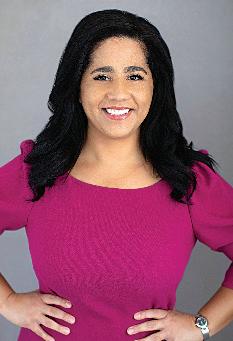
To help those who are interested in starting a running routine, attorney and experienced runner Sean McCormack provides some tips. He suggests finding beginner running options online or through local training groups, getting properly fitted for running shoes based on foot pronation, and starting with a distance that feels comfortable and gradually increasing it. He also recommends warming up with active movement before running, cooling down with a walk or jog after running, and staying hydrated and refueling with protein after each run. Additionally, listening to your body, cross-training to give legs a rest, and adjusting frequency and hydration based on weather and distance are important considerations.
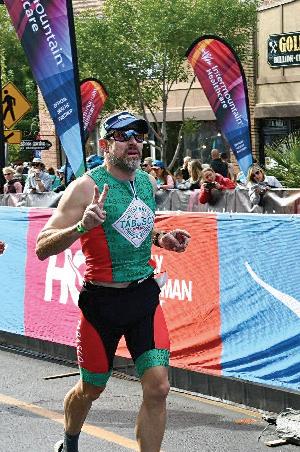
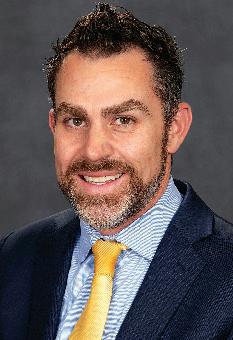
Q: How can someone start running?
A: A bunch of beginning options are available on the internet or through local training groups and programs. Track Shack, a local running store, has beginning running groups available at every level. Some people help to keep themselves motivated if they run with a group or another individual.
Q: What type of shoe/equipment should someone use/are the best for a beginner? How does someone know when they need new shoes?
A: Make sure you are fit correctly for running shoes. I recommend getting your feet measured and having your running stride watched. Track Shack will size your feet, watch your running stride, and make the necessary recommendations for shoes depending on the pronation of your feet, which is the normal movement of your foot that occurs during landing while running or walking. There are three types: overpronation, underpronation, and neutral. To avoid injuries, you want a pair of shoes with an appropriate fit and wear for your type of pronation.
Q: How does someone control their breathing while running?
A: Most importantly, remember to breath while running. Eighty percent of your runs should be at an easy to comfortable pace, and your breathing will follow naturally. Keep the chest up and allow oxygen into the lungs. For a beginner, I recommend doing these easy to comfortable runs. Most advanced runners will run with a heart rate monitor, either as a chest strap or built into their watch. The heart rate level is a great gauge of your intensity level and whether your breathing needs to be adjusted.
Q: What distance is it reasonable to start with? How should someone increase the distance?
A: Start with a distance that feels comfortable, perhaps running for 15 to 20 minutes and slowly building from there. Increasing the distance will come with comfort and fitness.
Q: What steps should someone take before each run? Is it necessary to warm up before each run?
A: I find that active movement as opposed to passive stretching is best. Walking can be a great warm-up, or try doing an easy jog for the first five to 10 minutes before starting your run workout.
Q: What steps should someone take after each run?
A: Remember to cool down by doing an easy walk or jog for about five minutes. Also, make sure you help your recovery by eating and drinking afterward. Remember to stay hydrated and to eat some sort of protein after each run.
Q: How does someone prevent injuries while running?
A: Listen to your body. Slowly ease into a running training plan. Don’t continue to run if something hurts. There is a difference between feeling fatigued and feeling an uncomfortable pain or twinge in your body. Cross training is helpful to give your legs a rest. yoga, Pilates, and swimming are great alternatives that don’t involve impact on the legs.
Q: How often should someone run? Should this change as they progress?
A: This is going to depend on your purpose and the race distance. If you are training for a race, the frequency will be different than for someone who is running for fitness. If you are running your first 5K, you will want to run/walk at least three times a week and slowly increase your workout frequency depending on your fitness goals or race distance. For a beginner, a workout could consist of a 20- to 30-minute timed session where you alternate running/ walking for one minute each and repeat. For my half Ironman distances, I typically run at least five days a week.
Q: How much water should someone drink before, during, and after each run?
A: This will depend on circumstances like the weather and the distance of the run. Anyone who is going to tackle a running race should keep themselves hydrated during the day, including before and after a workout. Listen to your body and try to run on a route that has water fountains available.
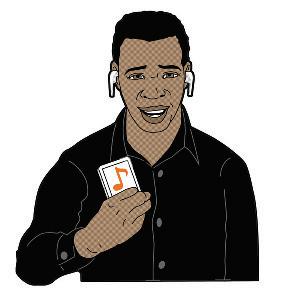
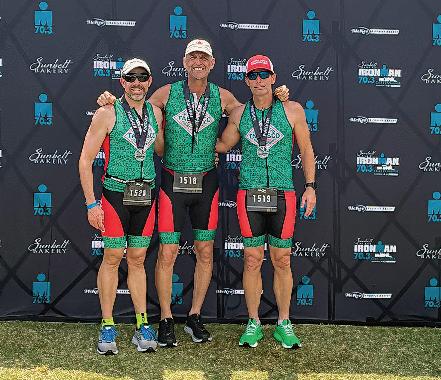
Q: What should someone eat before, during, and after each run?
A: This depends on the distance or length of the workout. Something light like a banana or a protein bar is a good snack to have before a run. You may feel like you need nothing if your workout is less than 30 minutes. I would avoid eating anything heavy like a full meal before a run. After the run, it is important to refuel your body with some protein. If you are doing a long run, look into nutritional choices like gels or gummy chews that are easy to carry and digest during a longer run. My personal favorite are the CLIF BLOKS, which come in packages of six flavored gummies.
Q: What other exercises are good to help with running?
A: Anything you enjoy. Yoga, biking, lifting weights, and swimming are all alternatives that don’t require impact on your knees.
Q: What type of surface is better for beginner runners (e.g., paved, non-paved, beach)?
A: This is a personal preference. There are some gravel trails in Central Florida like on North Apopka Lake, which can provide great scenery. If you are a beginner, I recommend running on a flat surface and avoiding any type of hiking trails. Some runners enjoy the beach, but make sure you are running on compacted sand to avoid any injuries from soft sand, which can cause falls or missteps.
Q: What can someone do after a run to help loosen/relax my muscles?
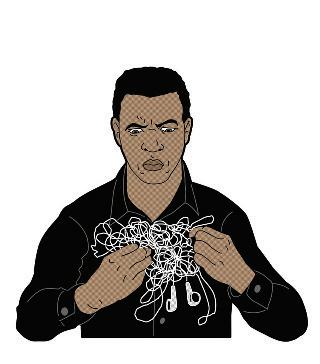
A: Foam rolling, massage, and rest are all options.
Q: Do you have any other tips?
A: Whether it is running or any type of physical exercise, find something you enjoy and that relieves your stress.
Now, it’s time to get out and start running. Follow these tips and you will be ready for next year’s OCBA Law Day 5K!
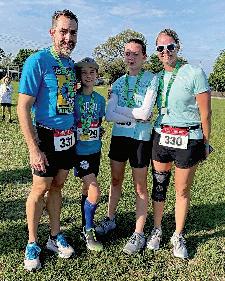
Evelyn J. Pabon Figueroa, Esq, is an attorney at CPLS, P.A., where she practices immigration and bankruptcy. She has been a member of the OCBA since 2006.
Sean McCormack, Esq., is a shareholder at Colling Gilbert & Wright, where he practices workers’ compensation and social security disability. He has been a member of the OCBA since 2011.
Next, the applicant must show that they are in a good position to advance their proposed endeavor. This can be demonstrated through their experience, education, record of success, interest of potential customers or investors, and a number of other factors. Affidavits from colleagues, clients, and employers are often helpful to establish that an applicant has played a significant role in past endeavors, and therefore is well-positioned to advance future endeavors.
Finally, to prove that issuing the waiver would be beneficial to the U.S., USCIS will evaluate a number of factors, and determine if – on balance – it would be impractical for the applicant to secure a job offer or a labor certification. One of the key criteria used in this evaluation is whether qualified U.S. workers are available, and if so, the country would still benefit from the foreign national’s contributions. Another important factor is the urgency of the proposed endeavor, which in this case is caused by the serious shortage of medical professionals. courageous. You got a chance to tell your story. I listened to your story, and others heard your story as well. We only have power over doing the right thing. In our judicial system, we turn this story over to a judge or a jury and put the evidence in their hands. We can’t say what the outcome would have been had we given this case to a different judge or jury; we will never know because that didn’t happen. You can go to bed knowing that you did the best job you could with your testimony. There are no perfect clients, jurors, witnesses, or judges. It takes courage to do what you did – you stood up for yourself, and that’s all you could do.”
Based on the national importance of addressing systemic issues in the U.S. health system exposed by the pandemic, the aging U.S. population, the rapidly growing shortage of U.S. medical staff, and the urgent need as expressed by the AMA, foreign trained medical personnel that meet the above criteria and are interested in developing a career in the U.S. can make a significant difference in the healthcare of Americans.
Sal Picataggio, Esq., is an attorney with Colombo and Hurd. Mr. Picataggio practices in the area of immigration law, focusing on business, employment, and investment processes. He is a former chair and current board member of the OCBA Immigration Law Committee. He has been a member of the OCBA since 2011.
Pedro Dearaujo, Esq., is an attorney at PD Law Firm. Mr. Dearaujo practices in the area of immigration law, focusing on employment, investment, and family. He currently serves on the board of the OCBA Immigration Law Committee. He has been a member of the OCBA since 2016.
1James L. Madara, MD, Comment Letter to U.S. Department of State and U.S. Department of Homeland Security, American Medical Association (Mar. 24, 2020),https://searchlf.ama-assn.org/letter/documentDownload?uri=%2Funstructured%2Fbinary%2Fletter%2FLETTERS%2F2020-3-24-AMA-Letter-to-DoS-and-DHS-re-COVID-19.pdf (last visited Mar. 23, 2023) (emphasis added).
Takeaway Thoughts
Losing a trial doesn’t have to get the best of us mentally, emotionally, and physically. There are mechanisms we can employ to help us cope with such a loss such as:
• Remembering our victories and the fact that we can win again.
• Putting in place and exercising good self-care mechanisms before loss occurs so we can draw from those resources if and when the need arises.
• Grieving our losses in a healthy way and for a limited time.
• Reminding our client that, while this loss is upsetting, he or she took the risk and told his or her story as best as possible at the moment.
• Learning from our failures; and
• Getting up again and getting back on the horse.
Think for a minute about what might have happened had Michael Jordan quit after losing a few games: More likely than not, he would not have become the great basketball player that he became. He would not have influenced the game of basketball the way he did. And he would not have become the leader, role model, businessman, and philanthropist that he has become.
Like Jordan, we’re not quitters. We get back up again, shake off the dust, and move for- ward because in each of us beats the heart of a champion, a warrior that doesn’t quit even in the face of adversity or loss. So, suit up, get back on the court, and meet the challenge with renewed courage
Paul Pelton, FRP, is a Senior Litigation Paralegal at Paul, Knopf, Bigger, PLLC in Winter Park, FL. and serves in various capacities at the OCBA, The Florida Bar, and Valencia College Paralegal Program Advisory Panel. He has been a member of the OCBA since 2015.
1Legends Profile: Michael Jordan.NBA.com. September 14, 2021. Accessed March 9, 2023.
2Jordan, Michael and Mark Vancil. Driven From Within New York, Atria Books, 2005.
3MICHAEL TRAYNOR, JD, LCSW, TEP, Albany, NY, and Winter Park, FL, facilitates psychodrama groups and training workshops in national and international settings. Michael was formerly a psychodrama instructor for the Trial Lawyers College from 20102021. He also facilitates psychodrama training for attorneys and is a trial consultant using psychodramatic methods with clients and in focus groups. He may be reached at traynormr@me.com.
The Legal Limit is the official podcast of the Orange County Bar Association, Inc. The Legal Limit brings you one-on-one interviews with the people shaping our Central Florida community.







